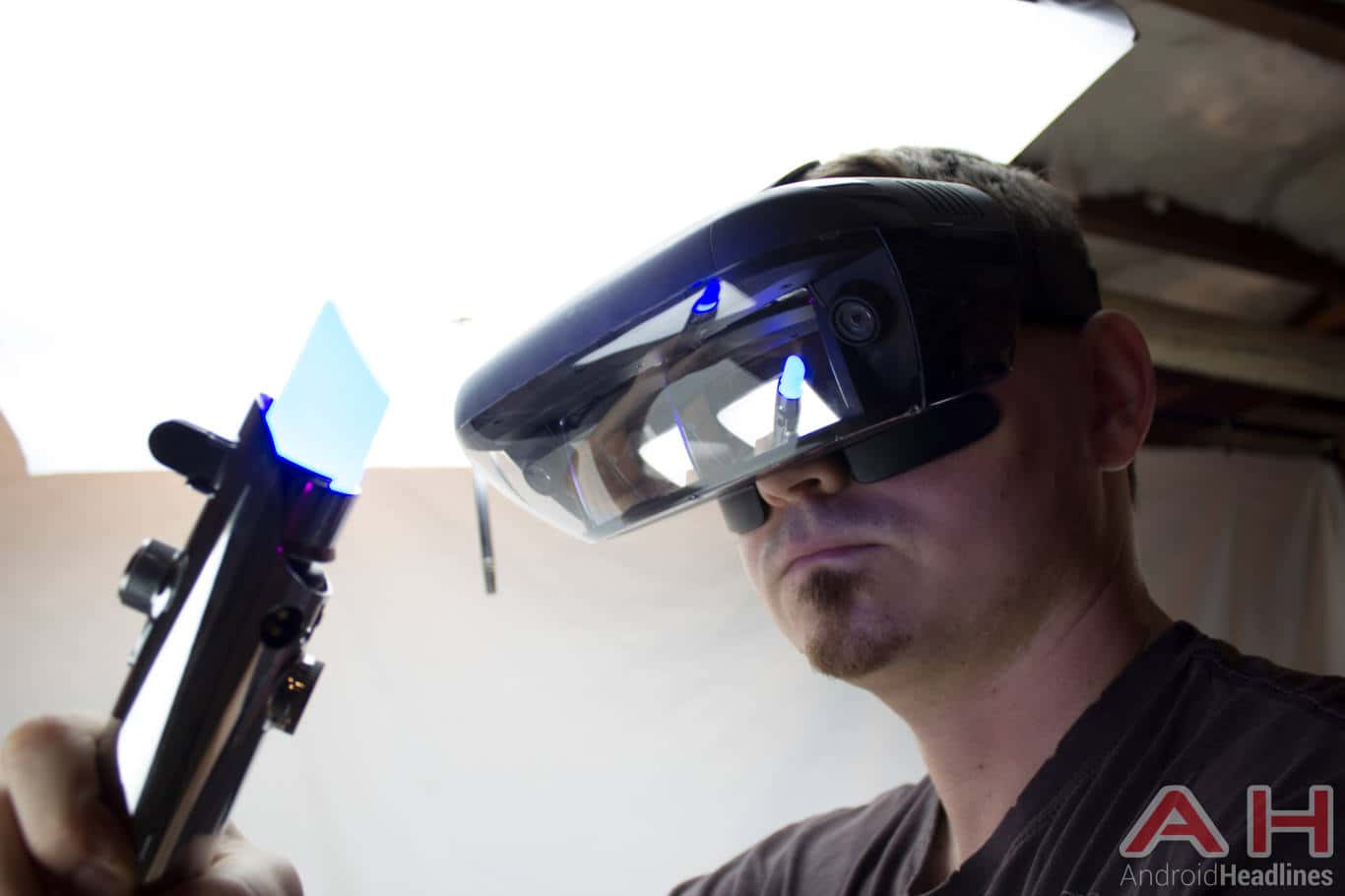Báo song ngữ 32: Thực tế ảo (VR) sẽ nhường chỗ cho thực tế tăng cường (AR) trong năm nay
![]() 08/01/2019 14:10
08/01/2019 14:10
![]() Báo song ngữ
Báo song ngữ

VR Will Take A Backseat To AR This Year
* VR- virtual reality: Thực tế ảo
* AR- augmented reality: thực tế tăng cường.
While the last two or three years have seen heavy focus on virtual reality technology, 2018 seems to be the year that will mark the focus on augmented reality. AR has been available in some form or another before now. Ingress, Pokemon GO, and even other, older applications have used a form of augmented reality to show people virtual graphics that were overlayed on top of the real world and top of whatever their camera sees. This is all sort of small though compared to the way AR technology will be present this year. Google, naturally, already has it hands in the AR pot.
While it’s not hard to envision all of the things that Google could possibly do with augmented reality it’s already starting with things like Google Lens, which utilizes machine learning technology to analyze the different details inside of photographs and deliver relevant information about them to the user. Google Lens is already available inside of the Google Photos app and there’s even a button for it that users can access from the Google Assistant interface on their smartphones. Beyond Google Lens, companies like Microsoft, Acer, Samsung and others are working with Augmented Reality too. The Windows Mixed Reality platform is a good example of this and while Mixed Reality is not just AR alone, it does incorporate AR technology along with VR technology.
The Mixed Reality platform that Windows launched has technically been available since the end of last year, but some of those headsets have only been available a very short time with Samsung’s Odyssey headset launching in late 2017, so more companies are bound to release these kinds of headsets this year and give AR more of a focus.
Magic Leap, the company behind some of the most fabled AR technology finally revealed just last month what it had been working on for so long. The device, called the Magic Leap One, is a set of Mixed Reality goggles that will be available for developers later this year. Even Oculus patented its own AR goggles back in August of 2017, so it’s very possible that these could end up surfacing this year and adding to what the company already offers to consumers through its own Rift headset as the well as the platform that powers Samsung’s Gear VR.
Other products like Google’s AR stickers feature that you can find in the Pixel camera, or Lenovo’s Jedi Challenges headset and Lightsaber combo which just released at the tailend of 2017 are a glimpse at what’s to come, and while both of those things were available last year, it’s a showcase of what to expect as both Google and Lenovo will no doubt be expanding on those offerings. There’s plenty of unknowns in regards to what actual, tangible products will come about this year, but it’s no secret at this point that companies are working on Augmented Reality.
Google’s announcement and launch of the ARCore platform is another good example of how AR will be one of the biggest technology focuses in 2018, and ARCore is only one platform, coming from one company - Google. Others will have their own, such as Apple with the ARKit. Not to mention, ARCore isn’t just going to be in Google devices. Samsung has already adopted it for its future Galaxy devices and some of Google’s other partners are sure to do the same, which means consumers will see more and more Augmented Reality-capable products on the market, and ones that can fit in the palm of their hands no less.
Trong khi mọi sự chú ý đều đổ dồn vào công nghệ thực tế ảo trong khoảng từ hai đến ba năm vừa qua, thì 2018 được dự báo sẽ là năm của công nghệ thực tế tăng cường (AR). Trước đây, AR đã được áp dụng dưới một số hình thức khác nhau. Những game như Ingress, Pokemon GO hay thậm chí là những ứng dụng cũ hơn cũng đã áp dụng công nghệ thực tế tăng cường để hiển thị đồ họa ảo trên bề mặt của thế giới thực hoặc trên bề mặt của bất cứ thứ gì được thấy qua camera.
Tuy nhiên, đó mới chỉ là những điểm rất nhỏ nếu so sánh với công nghệ AR ra mắt trong năm nay và Google cũng đã “nhúng tay” vào lĩnh vực AR. Không khó đoán việc Google sẽ ứng dụng AR như thế nào, họ đã bắt đầu với Google Lens (công cụ tìm kiếm thông qua hình ảnh) sử dụng công nghệ machine learning- máy học để phân tích các chi tiết khác nhau trong những bức ảnh và đưa ra thông tin liên quan đến những bức ảnh đó tới người dùng. Google Lens đã được tích hợp sẵn trong ứng dụng Google Photos, và thậm chí còn có nút bấm để người dùng có thể truy cập vào từ giao diện Google Assistant (trợ lý ảo) trên điện thoại thông minh của họ. Ngoài Google Lens, một số công ty như Microsoft, Acer, Samsung và các công ty khác cũng đang làm triển khai áp dụng thực tế tăng cường.
Nền tảng Windows Mixed Reality là một ví dụ điển hình và trong khi Mixed Reality (thực tế hỗn hợp tăng cường) không chỉ là AR, nó còn kết hợp công nghệ AR với công nghệ VR. Nền tảng Mixed Reality mà Windows cho ra mắt về cơ bản đã xuất hiện từ cuối năm ngoái, nhưng một số bộ headset (bộ kính) mới chỉ xuất hiện trong khoảng thời gian gần đây cùng với sự ra mắt của Odyssey của hãng Samsung vào năm 2017, vậy nên ngày càng có nhiều công ty quyết tâm cho ra đời những loại headset này vào năm nay cũng như dành nhiều sự chú ý hơn cho AR.
Vào tháng trước, Magic Leap, công ty đứng sau một số công nghệ AR khó tin nhất cuối cùng cũng tiết lộ những gì họ đã làm trong thời gian dài vừa qua. Thiết bị mang tên Magic Leap One - một bộ các mắt kính thực tế hỗn hợp tăng cường – sẽ xuất hiện dành các nhà phát triển vào dịp cuối năm nay. Ngay cả Oculus cũng có bằng sáng chế cho kính AR của họ vào tháng 8 năm 2017, vậy nên rất có thể những chiếc kính này sẽ xuất hiện vào cuối năm nay, thêm vào danh mục những sản phẩm mà công ty này đem đến cho người tiêu dùng thông qua bộ kính Rift của chính công ty họ, cũng như nền tảng hỗ trợ thực tế ảo Samsung’s Gear.
Một số sản phẩm khác như tính năng nhãn dán AR của Google bạn có thể tìm thấy trên camera Pixel, hoặc kính Lenovo’s Jedi Challenges và combo Lightsaber (kiếm laser) mới được ra mắt vào cuối năm 2017 mới chỉ là điểm qua những thứ sắp xuất hiện và trong khi cả hai thứ trên đều đã có mặt vào năm trước, đó là những dấu hiệu cho thấy những điều chúng ta có thể mong chờ Google và Lenovo chắc chắn sẽ mở rộng. Về việc sản phẩm thực sự và hiện hữu nào sẽ xuất hiện trong năm nay vẫn còn chưa rõ ràng nhưng tính đến thời điểm này, việc các công ty đang triển khai ap dụng công nghệ thực tế tăng cường không còn là bí mật.
Việc Google công bố và cho ra mắt nền tảng ARCore (lõi thực tế tăng cường) là một ví dụ điển hình khác cho thấy AR sẽ là một trong những công nghệ đình đám nhất trong năm 2018 và ARCore là một nền tảng duy nhất, đến từ một công ty là Google. Những công ty khác sẽ có nền tảng của riêng họ như Apple thì có ARKit. Không kể đến việc ARCore sẽ không chỉ có trên các thiết bị của Google. Samsung đã trang bị công nghệ
này cho dòng máy Galaxy trong tương lai. Bên cạnh đó, một số những đối tác khác của Google chắc chắn cũng sẽ làm điều tương tự, điều này có nghĩa là càng ngày càng có nhiều sản phẩm có ứng dụng công nghệ thực tế tăng cường trên thị trường, nhỏ vừa vặn trong lòng bàn tay.
- Báo song ngữ 34: Cách gây dựng và phát triển thương hiệu cá nhân
- Báo song ngữ 33: Tại sao Coca-Cola tăng trưởng lợi nhuận 9% trong năm 2018?
- Báo song ngữ 31: Chợ Hà Nội - góc nhìn dân sinh và kinh tế
- Báo song ngữ 30: Cạnh tranh nơi công sở
- Báo song ngữ 29: Vì sao ngày thứ Sáu ngay sau Lễ Tạ Ơn lại được gọi là ngày “Black Friday - Thứ sáu đen”?





![[BÍ KÍP NGHỀ DỊCH] Phương pháp dịch 03: Dịch nguyên văn](https://saokhue.edu.vn/mediacenter/media/images/1478/news/ava/s200_200/artboard-1-1588832349.png)



